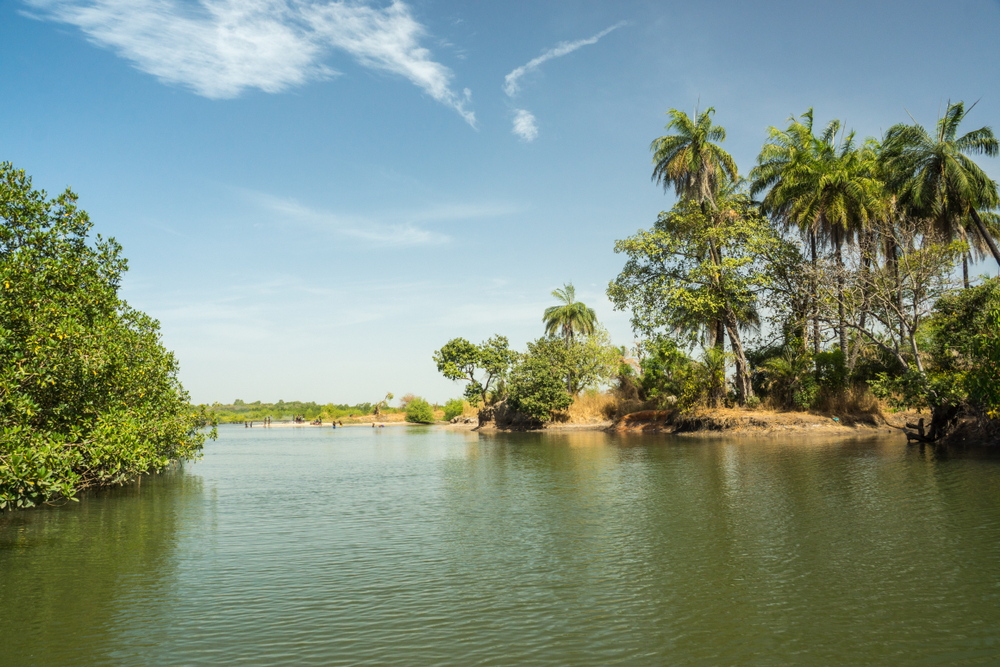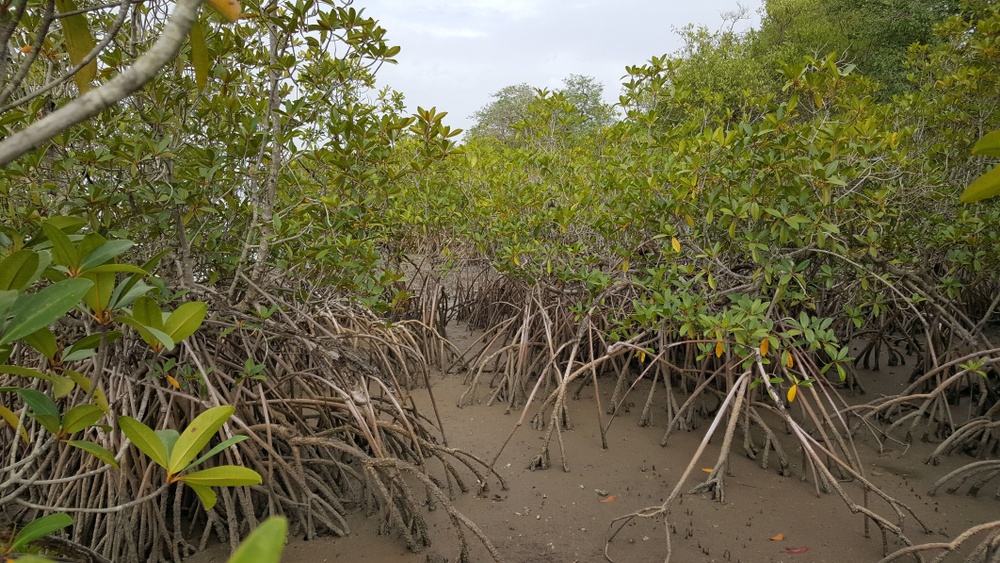River Gambia Overview
River Gambia National Park, also known as Baboon Islands, is a unique conservation area located in the central part of The Gambia. Covering approximately 580 hectares (1,435 acres), this park consists of a series of five islands situated along the Gambia River. Established in 1978, the park plays a crucial role in the conservation of wildlife, particularly primates, and serves as a key ecological and tourist destination in the region.
The park’s landscape is characterized by dense tropical forests, lush riverine vegetation, and mangrove swamps, creating a diverse habitat that supports a wide range of species. The islands are covered with thick vegetation, including tall trees, shrubs, and aquatic plants, providing an ideal environment for the wildlife that thrives here.
One of the most significant aspects of River Gambia National Park is its role in the rehabilitation and conservation of primates, particularly the endangered chimpanzee. The Chimpanzee Rehabilitation Project (CRP), established in 1979, is one of the park’s most renowned initiatives. This project provides a sanctuary for rescued and orphaned chimpanzees, allowing them to live in a semi-wild environment. The chimpanzees on these islands are protected and closely monitored, making the park one of the few places in West Africa where visitors can observe these primates in a natural setting.
In addition to chimpanzees, River Gambia National Park is home to a variety of other wildlife species. Visitors may encounter hippos, crocodiles, and a range of bird species such as African fish eagles, palm-nut vultures, and various kingfishers. The park’s diverse avifauna makes it a popular destination for birdwatching enthusiasts. The lush vegetation and tranquil waters of the Gambia River create a serene backdrop for wildlife observation.
Exploring River Gambia National Park is typically done by boat, as the islands are only accessible via the river. Boat tours offer a unique perspective of the park’s ecosystems and provide opportunities to observe wildlife up close without disturbing their natural habitats. These tours often include guided commentary, providing insights into the park’s conservation efforts and the behavior of its resident species.
Conservation efforts in River Gambia National Park are focused on protecting its diverse ecosystems and the species that inhabit them. The Chimpanzee Rehabilitation Project is a central component of these efforts, demonstrating a successful model of primate conservation and rehabilitation. Additionally, the park works to protect its riverine and mangrove habitats, which are crucial for the overall health of the Gambia River ecosystem.
The park also plays an important role in environmental education and awareness. By involving local communities and international visitors in its conservation activities, River Gambia National Park fosters a deeper understanding of the importance of protecting natural habitats and wildlife. Educational programs and community outreach initiatives help promote sustainable practices and the long-term preservation of the park’s resources.
In summary, River Gambia National Park is a remarkable conservation area that combines the beauty of its natural landscapes with significant efforts to protect and rehabilitate endangered species. Its dense forests, rich biodiversity, and innovative conservation projects make it a must-visit destination for nature lovers and eco-tourists. Whether navigating the Gambia River on a boat tour, observing the rehabilitated chimpanzees, or simply enjoying the serene environment, visitors to River Gambia National Park will experience the profound importance of wildlife conservation in one of West Africa’s most unique natural settings.











































































